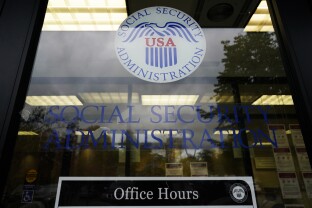The Social Security Administration will increase benefits by 2.8% in 2026, an annual cost of living adjustment that former administration officials and advocates worried the government shutdown would delay.
Nearly 71 million Social Security recipients will receive their increased benefits on time in January, and while the boost to their paycheck was saved, other important inflation work is falling victim to the shutdown, now in its 24th day.
Friday’s annual COLA announcement came just two weeks later than last year’s; approximately 123 Bureau of Labor Statistics staff came off furlough to calculate September consumer price changes — data the SSA needs for determining the adjustment.
The BLS coming back to work and the SSA implementing the adjustment does not mean beneficiaries will actually see a big increase in their checks because of expected raises to Medicare payments.
Sign Up for NOTUS’ Free Daily Newsletter
Medicare Part B premiums are often automatically deducted from Social Security checks. The “hold harmless” provision prevents annual Medicare Part B increases from exceeding the cost of living adjustment, meaning beneficiaries won’t see their Social Security benefits drop from year to year.
The Centers for Medicare and Medicaid Services has not released premium rates for 2026, but a board of trustees report from June estimated that the standard monthly premium would rise to $206.50 from $185 — an 11.6% increase.
The SSA on Friday also raised the maximum amount of earnings subject to the Social Security tax from $176,100 to $184,500. The tax rates for workers will stay the same.
While BLS staff returned from the shutdown to calculate the cost of living adjustment, the agency did not resume collecting data, including consumer prices for the month of October, according to the Department of Labor’s updated shutdown plan. That knowledge gap is like a “black hole” for how the economy changed this month, said Gbenga Ajilore, the chief economist at the Center on Budget and Policy Priorities.
The missing data could be troublesome for next week’s meeting of the Federal Open Market Committee, which sits within the Federal Reserve and decides interest rates, he added.
“It’s one of those things where it’s hard to make a decision about what to do with interest rates when you don’t have a great sense of where the economy is going,” Ajilore said.
Active data collection at the BLS will remain on pause until the government reopens, according to the plan.
Sign in
Log into your free account with your email. Don’t have one?
Check your email for a one-time code.
We sent a 4-digit code to . Enter the pin to confirm your account.
New code will be available in 1:00
Let’s try this again.
We encountered an error with the passcode sent to . Please reenter your email.


